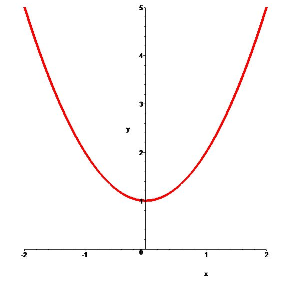I am a function
The experimenter can move back and forth on a 4-metre track. Its position is detected by a photocell. The graph of a given function appears on a screen in a coordinate system. The experimenter is now required to “trace” this curve in the form of a path-time diagram through his movements. The attempt to do this takes 10 seconds.
The experiment will now be explained using two examples:
If the given path-time diagram (e.g. for 6 seconds) has the following form




